PIR motion sensors are a popular intrusion alarm device, but their placement can cause some confusion. Can you simply take an indoor sensor and install it outdoors? The answer, unfortunately, is not a straightforward yes. Here’s why:
- False Alarms: While tempting to use an indoor sensor outside, you’ll likely experience frequent false alarms at first. This is because indoor sensors aren’t designed to handle environmental changes like wind, rain, or small animals.
- Shortened Lifespan: Indoor sensors lack the weatherproofing and dustproofing needed for outdoor use. Over time, exposure to the elements will render them inoperable.
This article is a complete guide on the comparison between indoor and outdoor PIR sensors. If you are thinking of installing an indoor PIR sensor outdoor, this guide will help you understand what will happen when you do so.
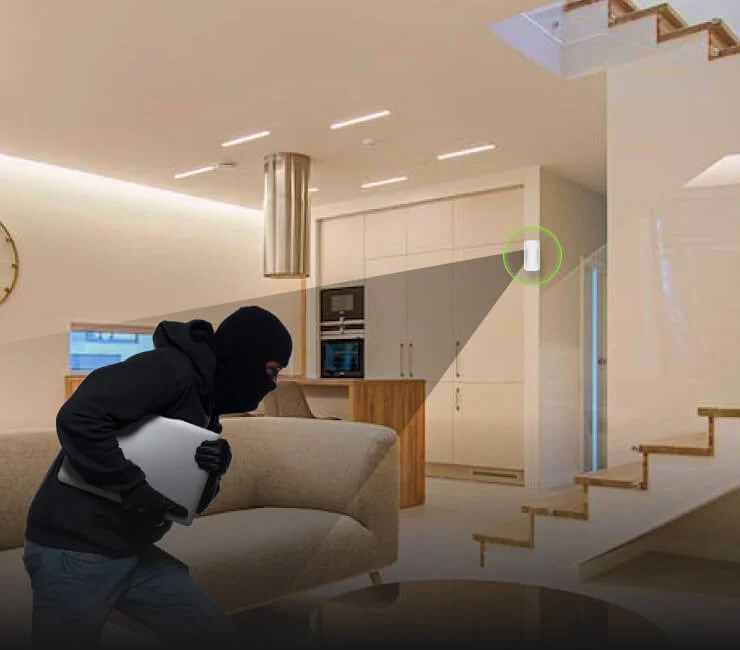
Definition of PIR Alarm System
Security of every home is of utmost importance demanding the latest tech solutions. One such solution is Passive infrared or PIR sensors. These sensors are generally used in home and retail security systems for motion detection.
Any variation noticed in infrared radiation (IR) emitted by living organisms can be easily detected by PIR sensors. These sensors work by sensing the movement of people and animals that come within their range. The changes in IR radiation alert the sensors to transfer the signals to the alarm system.
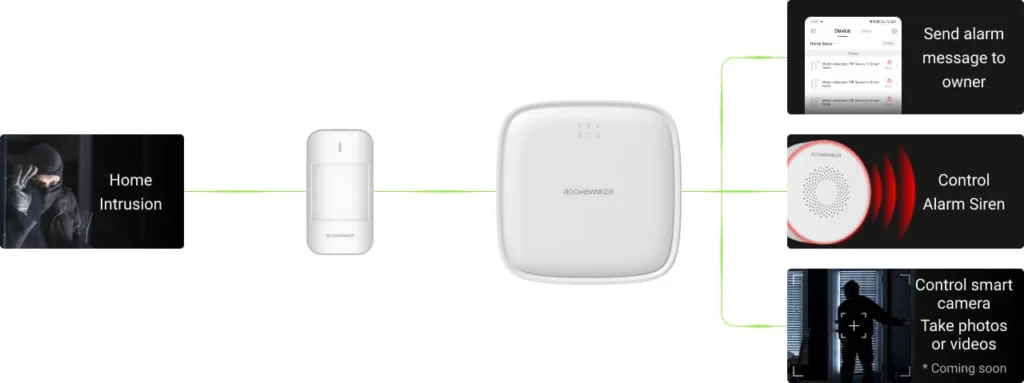
Also Read: What is PIR Alarm System?
What is Indoor PIR Sensor?
An Indoor PIR sensor works efficiently in closed areas, including homes, stores, and offices. Because of the stable and controllable indoor environment, these sensors are highly sensitive heat signatures, making them adept at detecting suspicious movement within their range.
Indoor PIR sensors have a detection range of 5 to 10 meters and the viewing angle around 90 to 120 meters, covering a significant area within a room.
It’s important to note that indoor PIR sensors prioritize precision performance. They typically lack the dustproofing and waterproofing needed to withstand outdoor conditions.
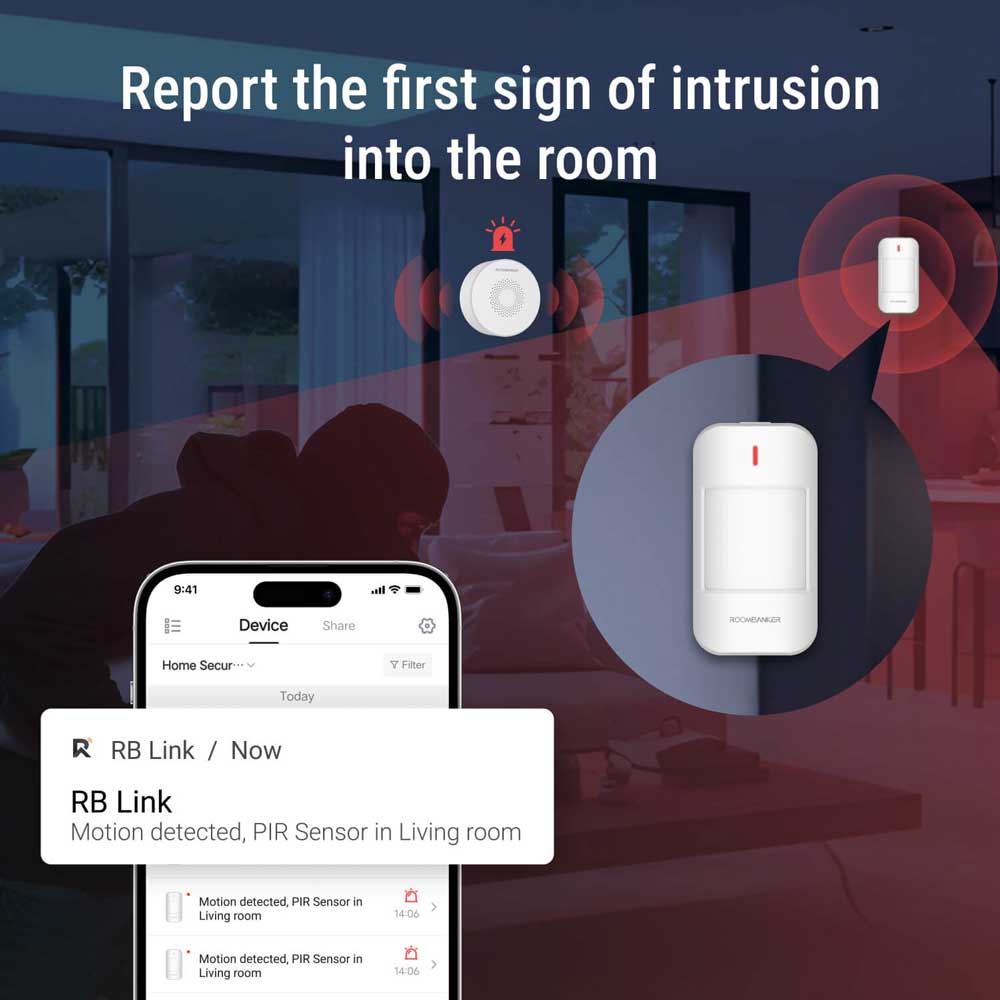
What is Outdoor PIR Sensor?
The outdoor sensor are designed specifically to detect moving human bodies in outside spaces. Due to the changing outdoor environment such as severe weather conditions, small animals, or swaying branches, the outdoor sensors have moderate sensitivity to minimize false alarms triggered by environmental factors.
Since outdoor spaces are often larger than indoor rooms, outdoor PIR sensors boast extended detection ranges, typically between 10 and 20 meters. Additionally, their wider viewing angles, ranging from 120 to 180 degrees, provide comprehensive coverage of property’s perimeter.
To endure the elements, these sensors are typically made of metal or high-strength plastic, shrug off rain, snow, and dust, ensuring reliable operation year-round.
Key Difference Between Indoor and Outdoor PIR Sensors?
Whether indoor or outdoor, these sensors detect motions. However, several differences are there in these PIR sensors that you must consider before selecting any sensor type for your indoor or outdoor spaces. Here are four major differences indoor and outdoor sensors endure:
Construction Differences
Indoor PIR sensors generally uses ordinary plastic or lightweight materials. The design focuses on aesthetics that allow them to blend elegantly into home or shop décor. However, this also means they have lower waterproof and dustproof ratings.
Outdoor PIR sensors are constructed with durable materials, such as metal or high-strength plastics to withstand the harsh outdoor environment. This emphasis on durability is reflected in their higher waterproof and dustproof ratings.
Sensitivity Levels
Among the most important differences, the sensitivity of indoor and outdoor PIR sensors is the major one.
Indoor environments are relatively stable. This allows indoor PIR sensors to be highly sensitive, making them adept at detecting even subtle movements within their range. This translates to a higher chance of catching an intruder without missing a beat.
If you share your home with furry companions, some indoor PIR sensors like Roombanker’s offer “pet-friendly” modes. These modes is able to ignore smaller movements, like those caused by your cat or dog, minimizing unwanted alarms.
Also Read: What is Pet-Immune PIR Motion Sensor?
The great outdoors throws a lot at a sensor – wind, rain, swaying trees, and even passing cars. Outdoor PIR sensors are designed with this in mind. Their moderate sensitivity helps to minimize false alarms caused by these environmental factors, while still ensuring they can detect actual security threats.
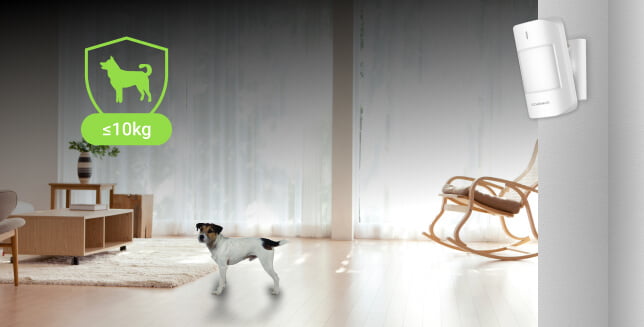
Detection Range
An outdoor PIR sensor usually consists of a larger detection range than an indoor PIR sensor.
Outdoor PIR sensors feature an impressive detection range of 10 to 20 meters, along with wider viewing angles of 120 to 180 degrees. This expansive coverage makes them ideal for detecting larger areas like yards, driveways, or perimeters.
Indoor PIR sensors have a detection range of 5 to 10 meters and viewing angles of 90 to 120 degrees. This range is perfectly suited for rooms within a home or retail shop. Their focus on targeted coverage ensures to effectively detect movement within the designated area.
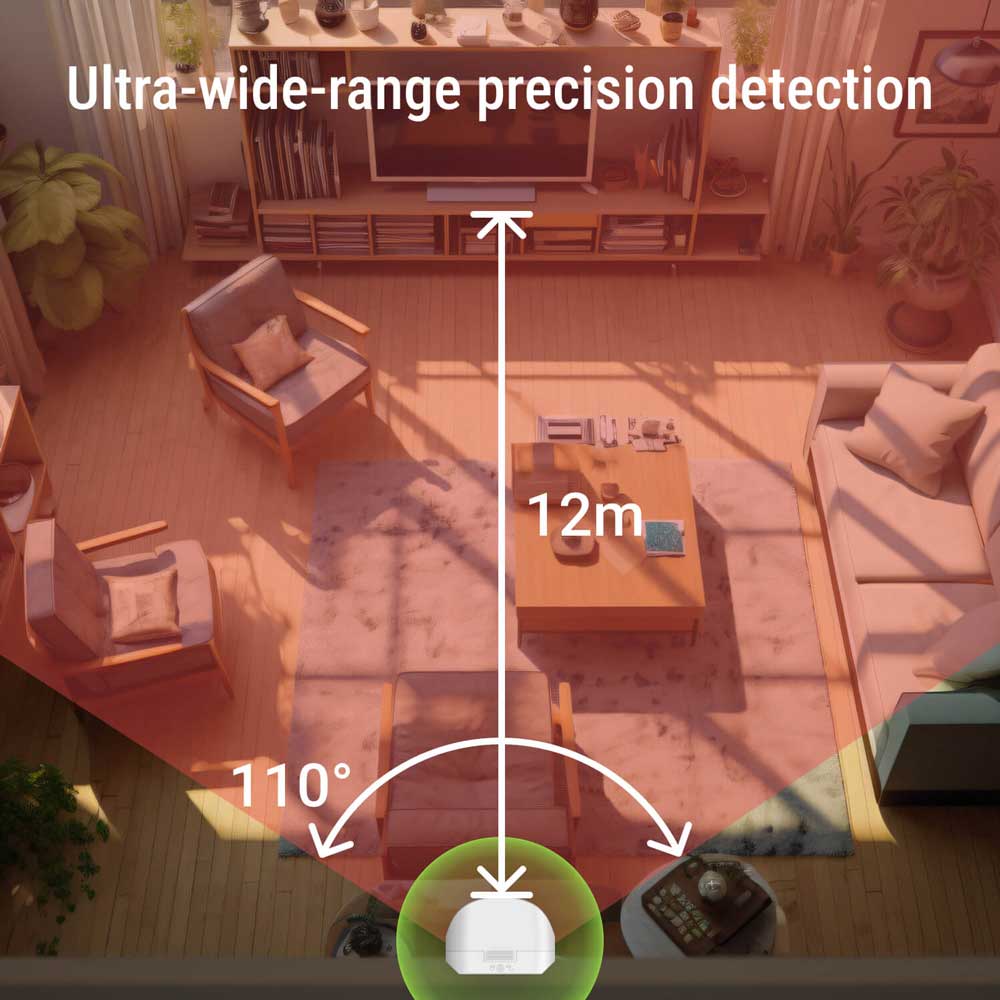
Temperature Adaptability
Indoor PIR sensors adapt to a narrow temperature range, generally 0 °C to 40 °C (32°F to 104°F). They’re also unfazed by changes in light, making them ideal for consistent indoor environments.
The outdoor PIR, on the other hand, needs to adapt to greater environmental changes, and can operate at -20 °C to 60 °C (-4°F to 140°F) or even higher. It works in a wide temperature range and needs to deal with the daily cycle of light and dark, including coping with direct sunlight, and so on.
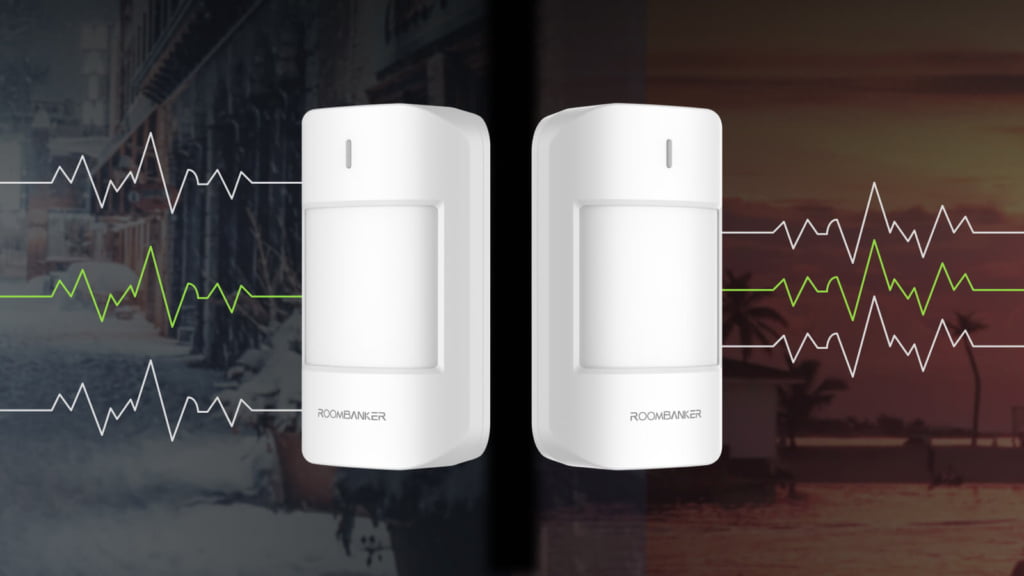
Installation
Indoor PIR sensors are generally easy to install. They’re often wall-mounted or ceiling-mounted, and their design prioritizes user-friendliness. Maintenance is typically straightforward as well.
Outdoor PIR sensor installation requires more planning and expertise. Factors like waterproofing, theft deterrence, and vandal resistance need to be carefully considered. The sensor’s position and angle need precise adjustment to ensure optimal performance and minimize false alarms.
Sensor Cost
The cost of PIR sensors varies depending on their features and capabilities. As you might expect, outdoor sensors generally come with a higher price tag compared to their indoor counterparts. This reflects the additional features and sturdier construction required for outdoor use, such as extended range, wider viewing angles, and weatherproofing.
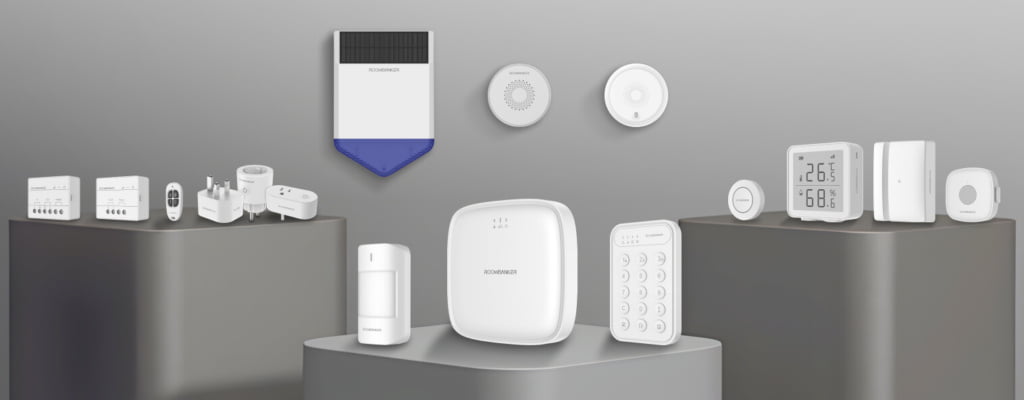
As you’ve seen, indoor and outdoor PIR sensors serve distinct purposes. Understanding these key differences enable you to make an informed decision about whether to use indoor PIR sensors to outdoor environment.
Roombanker manufactures high-quality PIR motion sensors and complete home security alarm system kits. We’re currently seeking reliable and experienced global distributors to expand our reach and keep communities safe. If you’re interested in partnering with a leader in security solutions, feel free to leave a message and we’ll be happy to connect!
Roombanker Wireless Security Alarm System combines ease of use with professional-grade features, offering effortless DIY installation and set up while integrating professional-grade features, including advanced detectors, a dedicated security hub, and supporting integration with Alarm Receiving Centres, etc, making it the go-to choice for a reliable wireless security alarm system, supporting intrusion alarm, fire & water leak alarm, panic alarm, etc., serving an array of small business and residential properties.
Tips on Buying PIR Sensors
When purchasing, you need to fully consider your usage scenario, whether to use it indoors or outdoors. Do not use indoor PIR at outdoor environments. This will cause many problems, such as false triggering and waterproof and dustproof problems.
- The range of PIR sensor monitoring also needs to be determined. PIR sensors with different specifications have different monitoring distances and angles.
- It is best to choose one with adjustable sensitivity, which can better resist detection interference caused by environmental changes.
- In terms of power supply, it is necessary to consider the convenience of power supply, whether it is battery-powered or wired power supply.
- In terms of interfaces and compatibility, you need to confirm whether the existing smart home security products at home are compatible with the newly purchased PIR sensor system, or directly purchase a new system gateway.
- There is also the price factor. Choose the product with the highest price/performance ratio based on your budget. The most expensive product may not necessarily be the best, but the one that suits your needs is the best choice.
Guide on PIR Motion Sensors Installation
PIR motion sensor installation will increase your home’s security by offering protection against unauthorized people. Below are some top tips on installing these sensors in your home or office:
1. Pick an Ideal Spot
Selecting the correct spot is the first to consider when installing your PIR sensors. To install an indoor sensor, mount them in places with more probability for intruders to pass through. For instance, your main entrance, hallway, or stairs.
Also, you must protect these sensors by keeping them away from heat, air vents, and windows. Such factors influence the functioning of an indoor sensor.
Moreover, you can install your outdoor sensor over the front door or outside of your house for better coverage.
3. Mounting Your PIR Sensor
After finalizing the right place, the next step is to mount your sensor. You can easily mount them on any wall or ceiling. However, it’s essential to mount them 6 to 8 ft higher than the ground and ensure they are faced at the area you wish to keep an eye on.
Roombanker PIR motion sensor has a signal strength indicator for users to find the best position with optimal signal performance.
An outdoor sensor needs a stronger mounting solution, like a weatherproof bracket or housing to protect them against any damage.
3. Power on Your Sensors
Many PIR sensors are equipped with low-voltage wiring or batteries. For a battery-operated PIR sensor, remove the insulation sheet as per the manufacturer’s guidelines.
However, if you are installing a wired sensor, route them via ceilings or walls to connect the sensor to your security system. Moreover, always comply with complete protection regulations and hire an expert for assistance.
4. Sensitivity Settings
Before moving towards the final step of the process, test the sensitivity levels of your sensor to check it detects motion perfectly. These PIR sensors are equipped with adjustable sensitivity settings enabling you to set its sensitivity levels and motion detection range.
5. Testing The Sensor
The final step of the installation process is to test your sensors to verify their functionality. Walk through the detection zone of your sensors to check if it activates your home security system. Make necessary changes until you are satisfied with their performance.
Take Away
Even though both indoor and outdoor sensors have the similar basic functionality of motion detection along with the same technology, a lot of major differences make them work under variable conditions.
- Indoor Advantage: Indoor sensors excel in stable environments, offering high sensitivity for precise intruder detection. They’re generally affordable, easy to install, and ideal for rooms within home or retail stores.
- Outdoor Strength: Outdoor sensors are built tough to withstand the elements and offer broader coverage for larger areas. Their moderate sensitivity helps minimize false alarms caused by environmental factors. While they typically require professional installation, they provide a robust layer of security for property’s perimeter.
You May Also Want to Read:
FAQs of PIR Motion Sensors
What Are the Advantages Of Using PIR Motion Sensors?
Installing passive Infrared sensors for home’s security is an ideal option for your indoor and outdoor spaces. These sensors are highly efficient in detecting movements and have great viewing angles. In indoor spaces, these PIR sensors deliver a variety of advantages improving home security and reliability. On the contrary, PIR sensors used outside your home provide improved benefits in contrast to indoor sensors. An outdoor sensor can withstand a wide range of environmental factors and adds an extra layer of protection to the outer area of your property. Here is a comparison of the advantages between indoor and outdoor PIR sensors:
Improve Home Protection
The Indoor sensor provides better security to the inside spaces of your property. With the help of motion detection in a limited range, an indoor sensor sends signals to alarms to inform you of an unusual activity. It can protect your home from intruders and prevent vandalism. The perimeter of your property can be secured by an efficient outdoor sensor. These PIR sensors alert you by using their motion detection features and prevent intruders from trespassing on your house or business.
Enhance Energy Efficiency
Among the pivotal advantages, improving energy efficiency is another excellent quality of indoor sensors. You can integrate them with your lighting to automatically switch them on and off. It will save a lot of energy and reduce electricity costs as well. However, an outdoor sensor is a versatile equipment used in various applications. If you wish to illuminate the outer area of your home or get alerts on the visitors reaching your main door, these outdoor PIR sensors are designed to meet your demands.
Offer Convenience
Both indoor and outdoor sensor types make your life easier. You can install and integrate these PIR sensors with the lighting systems of your hallway and backyard to switch on lights when you enter and turn them off when you walk away. These sensors are a great solution to simplify your daily life.
What If Indoor PIR Sensors Are Used Outdoors?
Technically speaking, the indoor PIR sensors can be installed in outside spaces. However, they won’t last long. An indoor sensor is not meant for heavy rain, high outdoor temperatures, and extreme cold snow. All these factors will lead to system malfunctioning. Moreover, outdoor PIR sensors can efficiently detect any changes in motion and contain a broader range, allowing them to monitor outside areas effectively.
reference:
https://ipcamtalk.com/threads/indoor-vs-outdoor-motion-sensors.43405/
https://www.cbusforums.com/threads/indoor-pirs-used-outdoors.423/
https://community.hubitat.com/t/any-good-outdoor-motion-sensors-zigbee-cheaper-than-hue/93776
